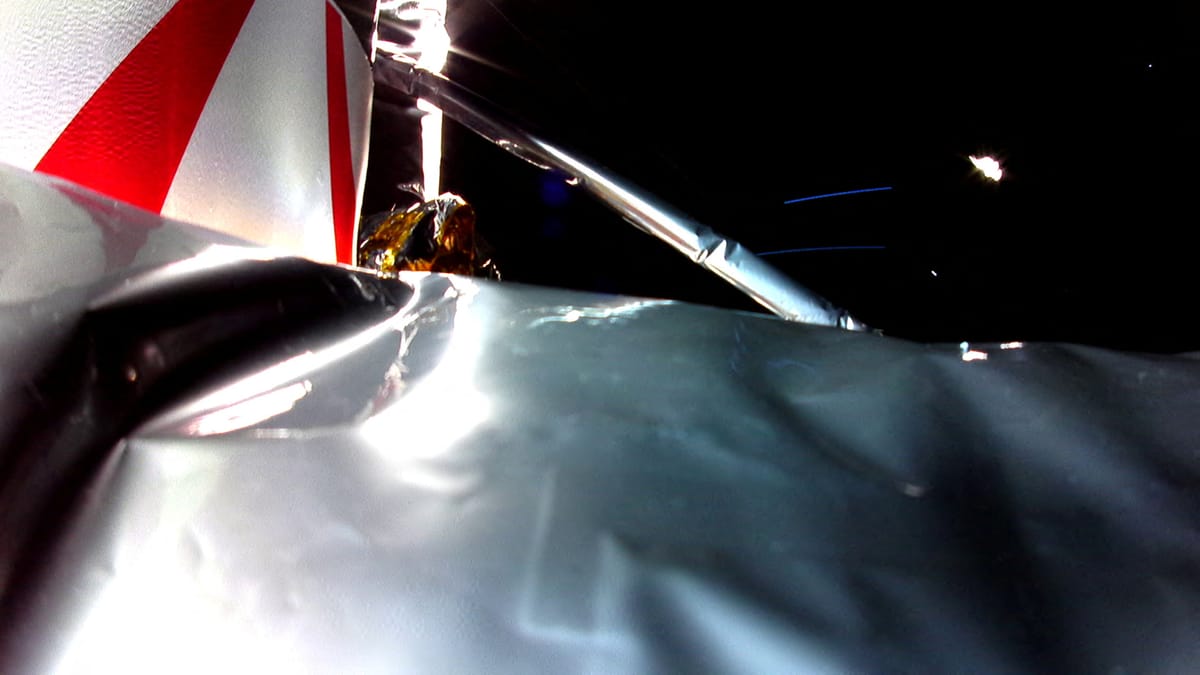Astrobotic and NASA's Peregrine moon landing mission ends with unexpected fuel leak
The lunar lander's journey ended in flames on January 18 with a plunge into the Pacific, confirmed by Astrobotic.

A few minutes every morning is all you need.
Stay up to date on the world's Headlines and Human Stories. It's fun, it's factual, it's fluff-free.
The backstory: On January 8, Peregrine One, a spacecraft trying for the first US moon landing in 50 years, took off on the Vulcan Centaur rocket, orbiting Earth smoothly before heading to the moon. This mission was a collaborative effort between Astrobotic Technology and NASA, with the shared vision of developing cost-effective lunar landers for robotic missions and laying the groundwork for crewed lunar landings in the future. Astrobotic, along with Intuitive Machines and Firefly, is also part of a new partnership with NASA for lunar missions in 2024.
But Peregrine started seeing challenges not long after its launch. A problem with its onboard propulsion system and a fuel leak put its soft lunar touchdown at risk. So, adapting to the setback, Astrobotic turned Peregrine into a satellite and was able to test some of its equipment and collect some data. Eventually, Astrobiotic decided on a controlled reentry into Earth's atmosphere for the craft, wrapping up the 10-day mission. Although the firm said the decision was a difficult one, it was ultimately the safest option to prevent creating more dangerous space debris.
The development: The lunar lander's journey ended in flames on January 18 with a plunge into the Pacific, confirmed by Astrobotic. Little to none of the craft was expected to survive after burning up during reentry and hitting the ocean surface. But the whole thing was also happening far away from any people, so it was safe.
Despite this disappointment, Astrobotic is preparing for another mission later this year to land NASA's rover, Viper, on the moon. At the same time, Intuitive Machines in Houston is getting ready for its first try with the Nova-C craft. It's set to launch next month and aims for the lunar south pole.
Key comments:
"I know it's very easy to focus on the failure and the one thing that failed on the spacecraft, and we're all gonna have dreams about that for a long time to come," Astrobotic CEO John Thornton said during a media teleconference on Friday. "But there's a lot that worked. And that is something I'm very proud of. That Astrobotic designed and built hardware like avionics and software and systems architectures and other parts of the spacecraft – they all worked."
“The data collected in flight sets the stage for understanding how some of our instruments may behave in the harsh environment of space when some of the duplicates fly on future CLPS flights,” Nicola Fox, NASA associate administrator for science, said in a statement.
"Space exploration is a learning game, especially at this stage and we shouldn't look at this as a failure; we should look at this as an incredible engineering success," said Sian Cleaver, Airbus' Orion European Service Module industrial manager, to the BBC.
“It’s certainly going to have some impact on our relationships and our ability to secure additional missions in the future,” said Astrobotic CEO John Thornton earlier this month about the possibility of a failed mission. “It certainly wouldn’t be the end of the business, but it would certainly be challenging … We’re in a high-risk space venture, and this is just the nature of space businesses.”




Comments ()